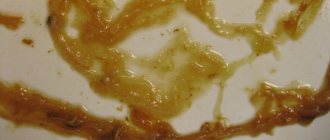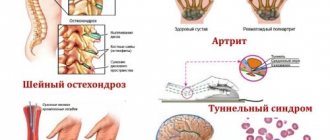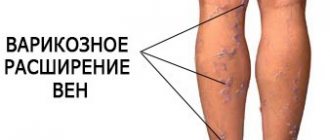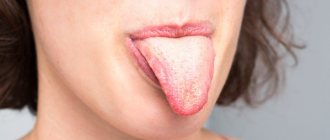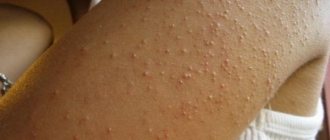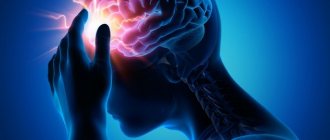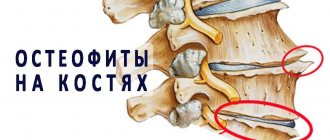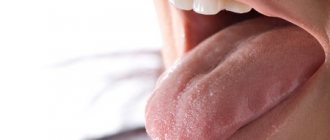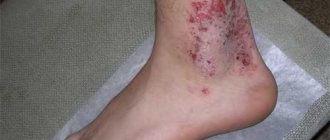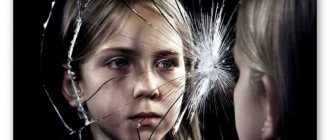Ringing in the ears is a manifestation that can be of a very diverse nature, from a slight rustle to a constant monotonous noise. A characteristic feature is that there are no external stimuli, that is, a person hears non-existent sounds.
- Etiology
- Classification
- Symptoms
- Diagnostics
- Treatment
- Prevention
Rumbling in the ears and head can be caused by a large number of predisposing factors, which are often pathological in nature and indicate the progression of various diseases.
Very often, the main symptom is accompanied by rather sparse symptoms, the basis of which is pain, and the most specific is the appearance of discharge from the ears.
In order to find out what was the source of such a sign, an integrated approach will be required - from an examination by an otolaryngologist to instrumental examinations of the patient.
The treatment tactics are determined by the etiological factor, but often conservative methods are sufficient.
Etiology
There are many circumstances that can cause the appearance of such an unpleasant sign, and not all of them are associated with pathological processes occurring in the hearing aid.
Among the damage to the outer ear it is worth highlighting:
- otitis externa;
- the entry of a foreign object into this organ is the most common source of such manifestations in children;
- accumulation of large amounts of earwax, which leads to the formation of a cerumen plug. This occurs due to irregular hygiene.
Diseases of the middle ear that cause the expression of such a symptom:
- otitis with the release of serous or purulent fluid;
- a wide range of eardrum injuries;
- Otosclerosis is a disease that is characterized by pathological growth of bone in this area.
Diseases of the inner ear include:
- Meniere's syndrome - in this case there is an increase in the volume of fluid in this cavity;
- swelling of the auditory nerve tissue;
- malignant or benign neoplasms of the auditory nerve;
- presbycusis is a condition characterized by age-related changes in auditory cells;
- the appearance of an inflammatory process is often a consequence of otitis media.
Predisposing factors for the manifestation of such a disorder, which are not associated with diseases of the hearing aid, are:
- arterial hypertension;
- vascular atherosclerosis;
- pathological narrowing of the carotid arteries or jugular veins;
- parotitis;
- vertebral artery syndrome;
- oncology of the nasopharynx;
- spondylosis;
- chondrosis;
- complicated pregnancy, namely eclampsia;
- cerebral aneurysm;
- metabolic disorders - this includes diabetes mellitus;
- superior vena cava syndrome;
- arachnoiditis;
- encephalopathy;
- bleeding in the gastrointestinal tract;
- osteochondrosis, localized in the cervical spine;
- hepatitis of viral origin;
- anemia;
- ischemic disease;
- cardiosclerosis;
- head injury.
Causes of ringing in the ears
In addition, there are additional causes of buzzing in the ears and head that are not related to illnesses, including:
- prolonged exposure to stressful situations;
- severe physical fatigue;
- water getting into the ear;
- unfavorable working conditions in which a person is forced to constantly come into contact with chemicals and poisons. It is because of this that males are more susceptible to the appearance of such an unpleasant symptom;
- fluctuations in barometric pressure;
- prolonged exposure to loud noise;
- weak vestibular apparatus.
This manifestation can also be caused by uncontrolled use of medications, including:
- medicines for the treatment of cardiovascular pathologies;
- antibacterial substances;
- loop diuretics;
- non-steroidal anti-inflammatory drugs.
Motives of tinnitus
Experts note two main periods of progression of this symptomatology that causes ringing in the ears: – Age-related changes.
– Pregnancy and the entire period of bearing a child. Both barriers are associated with changes in hormonal levels and restructuring of the body. Any changes are characterized by stress for the human body, which manifests itself in a reverse reaction and is aggravated in the presence of chronic diseases. In any case, such violations cannot be ignored and it is better to obtain full medical advice after a preliminary examination.
Classification
Noise and buzzing in the ears is divided into several types and can be:
- subjective - in such cases the hum is heard only by a sick person;
- objective - a strong noise is heard not only by the patient, but also by his attending physician. This form is the most rare;
- vibration - extraneous sounds are reproduced by the hearing aid itself. It can be heard by the clinician and the patient;
- non-vibrating - pathological noises are heard only by the patient, because they arise against the background of irritation of the nerve endings in the hearing aid.
Depending on the prevalence, tinnitus is divided into:
- unilateral – sounds are heard in only one ear;
- bilateral - noise is heard in both ears.
Depending on the time of appearance, it happens:
- constant buzzing in the ears;
- periodic noises - occur only during exacerbation of a particular disease.
general information
Intermittent noise in the right ear worries many people.
For doctors, this is also not an entirely simple problem. After all, it is important to accurately establish the cause. Noise in the right ear without pain is usually associated with natural processes; it occurs from irritation of the hairs that are localized inside. In a calm state, they do not manifest themselves in any way, but with irritation they move chaotically, which leads to noise.
Noise that appears in absolute silence is physiological. It is usually caught due to the movement of blood through the small vessels of the inner ear. It is not possible to determine the nature of these noises based on symptoms alone. Physiological noise usually occurs in people over 40 years of age.
Symptoms
The buzz in the ear will vary from person to person. Some patients have a monotonous noise, others have hissing and whistling, and still others have a buzzing and ringing sound.
Against the background of the main clinical manifestation, the following symptoms will appear:
- severe headaches;
- partial hearing loss;
- increase in body temperature;
- feeling of fullness inside the ear;
- the appearance of discharge from the ears;
- pain in the ear;
- attacks of nausea;
- weakness and malaise;
- dizziness;
- sleep disturbance;
- increased sensitivity to sounds;
- light intolerance;
- feeling of pressure in the ear.
The appearance of such signs should be an impetus to seek qualified help.
In addition to the main symptoms, the clinical picture will be supplemented by those symptoms that are most specific to the disease that has become the source of the hum or tinnitus.
Other methods
If there is noise in the right ear, what should I do? In addition to the use of medications, a course of physiotherapeutic procedures is required to eliminate discomfort. This treatment involves performing:
- pneumomassage;
- electrotherapy;
- laser therapy;
- acupressure;
- acupuncture.
There is no specific therapy aimed at eliminating noise. Comprehensive treatment is required, which takes into account all aspects of the condition and accompanying symptoms and gives favorable results. The disease that led to this symptom is eliminated, and then the discomfort itself disappears.
Diagnostics
In cases where such a symptom arose suddenly, and also does not go away for a long time and is accompanied by one or more of the above signs, you need to see an otolaryngologist as soon as possible. The first thing the clinician will do is:
- interview the patient - to obtain a complete clinical picture of the course of a particular illness, as well as to determine the degree of intensity of symptoms;
- will study the medical history and life history of the patient to search for the causes of such a disorder;
- will examine the ears using special instruments, and also evaluate hearing acuity.
Device for diagnosing buzzing in the ears and head
After this, it is necessary to carry out laboratory tests, which include:
- general blood analysis;
- blood biochemistry;
- analysis of thyroid hormones;
- serological studies.
Among the instrumental diagnostic procedures it is worth highlighting:
- tone threshold audiometry - hearing acuity is measured using a device such as an audiometer;
- The Weber test is another method for assessing hearing level. During this procedure, a tuning fork is used;
- X-ray of the skull and cervical spine;
- Dopplerography and rheoencephalography of cerebral vessels;
- CT and MRI – are performed if the clinician suspects a tumor process is occurring;
- CT scan of the skull using contrast – to refute or confirm the presence of a tumor in the inner ear.
The first signs are a signal to action
Experts note that people who are prone to drinking alcoholic beverages, smoking excessively and unhealthy foods (fast food, salty and smoked foods) have a 17.8% higher risk of tinnitus than those who are not addicted to bad habits.
If for people who are faced with overwork or one-time stressful conditions, such a pathology may be one-time in nature, then for those who lead an unhealthy lifestyle, these noises can accompany them constantly. The constant sensation of noise causes serious illnesses that are caused by damage to the eardrum, auditory nerves or bones.
– Identify pathology at an early stage. – Conduct a complete diagnosis without compromising time resources and identifying the entire morbidity picture. – Prescribe treatment based on the results obtained. – Reach the maximum level, since diagnosis at an early stage increases the chances of recovery significantly.
– Sharp surges of pain inside the ear and along the outside of the head. – Increase or decrease in intracranial pressure, a pressing feeling inside the fundus. – Headache localized to any part. Pulsation in the temporal region. – Feelings of the ear being full of water. – Dizziness, which may be accompanied by anemia and weakness.
The person turns pale and his condition resembles pre-stroke, fainting is possible. – Increasing hypotension leads to trembling of the hands, lethargy and vomiting. A person cannot remain in an upright position for a long time and constantly tries to lie down. – Increased body temperature is added to the general symptoms. When trying to touch the lobe, the sick person triggers a reflex caused by the presence of constant or variable pain. – Deterioration of hearing, manifestations of hearing loss. This tendency can lead to complete hearing loss.
Independent attempts to rid yourself of unpleasant manifestations will not bring any success, but will only complicate the situation. This is due to the presence of a wide range of causes and sources that can only be determined at the level of a professional medical examination, in a hospital or clinic.
Treatment
The specificity of eliminating such a symptom is that you need to get rid not of tinnitus, but of the factor that caused it. It follows that treatment will be individual in nature:
- if there is wax plug, rinsing the ears will be sufficient;
- in cases of overwork or stress, you will need to take general strengthening substances and antidepressants;
- if the source is cerebral vascular pathology or hypertension, then comprehensive elimination of cardiovascular diseases, taking medications to lower blood pressure and improve cerebral circulation are necessary;
- inflammatory pathologies of the hearing aid require the use of antibacterial agents or the use of local therapy. If such ailments are severe, surgical intervention is necessary;
- in case of otosclerosis, an operation aimed at prosthetics of the auditory ossicle is indicated;
- In cases of damage to the auditory nerve, the only treatment method is the use of a hearing aid.
What to do if you have a ringing in your ears
Good results can be achieved using the following physiotherapeutic procedures:
- electrophonophoresis;
- magnetic therapy;
- laser therapy.
Sometimes you can use alternative medicine methods. To prepare medicinal decoctions and infusions use:
- currant and strawberry leaves;
- elder flowers;
- lilac and clover;
- rowan and lemon balm;
- Dill seeds;
- horseradish root.
To obtain drops that need to be instilled into the ears, use:
- Bay leaf;
- beet juice;
- baked onion;
- garlic;
- raw potatoes;
- propolis.
In addition, good results can be achieved by performing simple exercises:
- breathing exercise - you need to close your nostrils with your fingers and try to inhale air through the nasal cavity until a characteristic “pop” appears in the ears. If after three repetitions such an exercise does not produce results, then it is best to abandon it;
- Tapping on the skull is a simple but effective method. You need to lightly tap your head with your fingers. If after forty clicks the noise does not disappear, then the exercise should be stopped;
- squeezing the ears with your palms - to do this, you just need to cover both ears with your palms, press so that a feeling of vacuum arises and suddenly release;
- intensive rubbing of the point, which is located two centimeters from the earlobe towards the cheekbone;
- insert your fingers tightly into your ears, then suddenly and simultaneously remove them;
- Rub the edge of the ear with your thumb and index finger for a minute. You need to move from the top point to the lobe and back.
Occupational medicine and tinnitus
It is important to understand that tinnitus in any manifestation is just a symptom of a particular pathology. The problem may lie anywhere in the auditory analyzer, and if it is not found, then you should not count on the effect of treatment.
Traditional medicine should be used only as ancillary procedures to the main therapy. There are several recipes that can be easily prepared at home:
- Peppermint infusion. You will need dried leaves (1 tbsp), which are poured with boiling water (200 ml). Infusion is carried out for 5 minutes, after which straining is required. This portion is drunk in 2 doses - morning and evening.
- Medicinal composition based on cornflower, lilac and thyme flowers. All components take 1 tbsp. l., and then pour boiled water (300 ml). The mixture should be simmered over low heat for 3 minutes. Then it is cooled, filtered, and taken 20 ml 3 times a day.
- Tincture of red clover flowers. Raw materials (2 tbsp.) are poured with vodka (50 ml), kept in a dark place for 5 days. You should drink 1 tsp. before eating.
It must be taken into account that it is impossible to cure noise only with folk remedies. They can only serve as an addition to the main therapy; the use of such methods is important to coordinate with your doctor.
Prevention
Tinnitus does not require any specific preventive measures. To avoid its occurrence, you only need to:
- follow safety rules when working with toxic substances and heavy metals;
- take medications only as prescribed by your doctor and strictly adhere to the dosage;
- avoid physical and nervous stress;
- completely eliminate or minimize the impact of loud sounds on the ears;
- make sure that water does not get into your ears;
- Clean your ear canals regularly with cotton swabs.
Since a large number of different diseases can cause a buzzing sound in the ears and head, the main preventive recommendation is to regularly undergo a full medical examination.
General recommendations
These are important tips on which the effect of treatment depends. They will speed up recovery. It is important to analyze your lifestyle and think about what needs to be improved:
- Nutrition. It must be complete and healthy. You should not eat late in the evening; you should eat only natural foods.
- Movement. Daily physical activity in the fresh air is necessary. The norm is 10,000 steps per day, which is required for good health.
- Exercises. You can play sports in the gym, dance, or choose another healthy type of physical activity. And then you will feel cheerful throughout the day.
- Hardening. You can choose any suitable type. This could be walking on the grass with bare feet, swimming in a river, a contrast shower, dousing your feet and body.
- You need to take vitamin complexes regularly. These can be dietary supplements, superfoods - spirulina, chlorella, flax seeds. All this perfectly strengthens the immune system.
These recommendations will help you quickly improve your well-being by getting rid of unpleasant ear discomfort.
